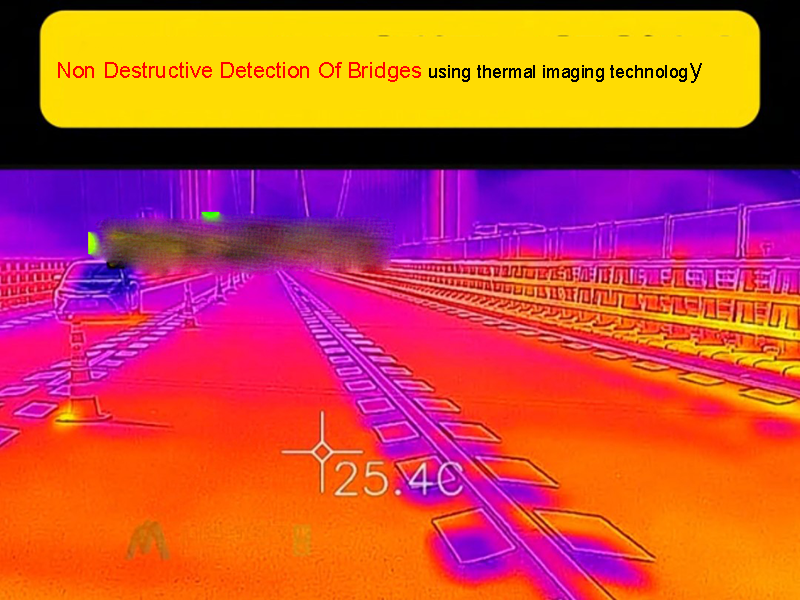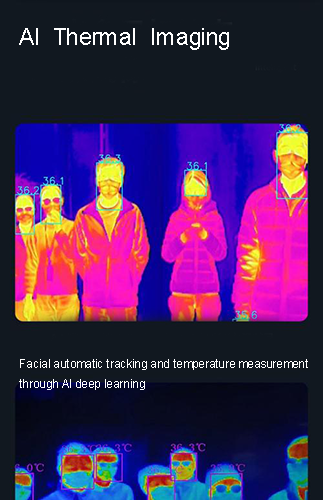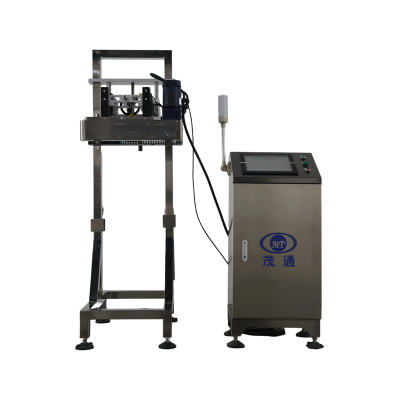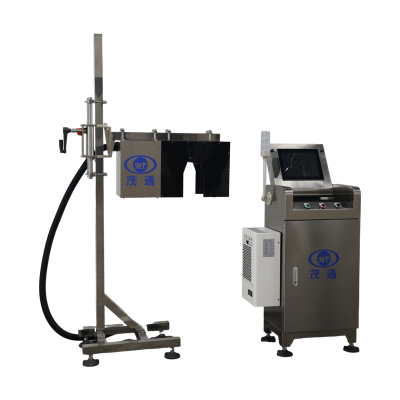Thermal Imaging Technology: A "Smart Eye" That Penetrates the Darkness
Temperature is the silent language of all objects in the universe; thermal imaging technology is the key to deciphering this language.
In a smoke-filled fire, firefighters use special equipment on their helmets to clearly locate trapped victims; on a pitch-black border, surveillance systems easily detect intruders; in a factory amidst the roar of equipment, engineers can pinpoint overheating faults without even touching the wiring. These seemingly magical scenes are real-life applications of thermal imaging technology.
Once a high-tech technology limited to the military, thermal imaging has now penetrated every aspect of civilian use. From industrial testing to medical diagnostics, from security monitoring to consumer electronics, this "smart eye" is reshaping our perception of the world in unprecedented ways.
1. Working Principle: Decoding the Invisible World of Infrared
The physical basis of thermal imaging technology is the ubiquitous phenomenon of thermal radiation. All objects above absolute zero (-273°C) radiate infrared radiation, and the intensity and wavelength distribution of this radiation directly depend on the object's surface temperature. Thermal imaging equipment uses an infrared detector and an optical imaging lens to receive the infrared radiation pattern of the target being measured, focusing it onto a detector element capable of sensing infrared light. The detector element then converts the infrared radiation into an electrical signal, which, after undergoing complex algorithmic processing, ultimately produces a visible thermal image on a screen.
The different colors in this thermal image represent the temperature distribution of the target being measured. Modern thermal imagers can generate real-time temperature distribution images at rates of up to tens of frames per second, enabling the observer to precisely locate hot spots or areas of abnormal temperature.
Unlike night vision devices, which require external light sources, thermal imaging relies entirely on the infrared radiation emitted by the object itself, making it a "passive" detection technology. This feature enables it to function effectively in complete darkness, fog, or other visually obstructed environments, making it a truly all-weather perception tool.
2. Core Advantage: Surpassing the Optical Limits of the Naked Eye
Thermal imaging technology possesses several unique advantages, making it irreplaceable in numerous applications. It does not rely on visible light for imaging, enabling it to clearly display targets in harsh environments such as darkness, haze, and smoke.
Thermal imaging's penetrating power is another major advantage. Due to the long wavelength of infrared light, thermal imaging technology can, to a certain extent, penetrate obstructions such as smoke, rain, and foliage, allowing it to detect hidden targets. In the security field, this feature makes thermal imaging equipment effective in identifying camouflaged and concealed targets.
Thermal imaging technology also provides non-contact temperature measurement, acquiring accurate temperature distribution data without disturbing the object being measured. This feature makes it particularly suitable for measuring the temperature of moving objects, high-risk environments, or small objects.
Unlike infrared thermometers that only measure point temperatures, thermal imagers can simultaneously measure the temperature at all points on an object's surface, visually displaying changes in the entire temperature field. This surface-based temperature measurement capability is crucial for detecting localized hot spots and abnormal temperature distribution.
3. Technological Evolution: From Exclusive Military Use to Popular Civilian Use
Infrared thermal imaging technology originally originated in military applications, primarily for nighttime observation and missile guidance. In the 1970s, developed countries in Europe and the United States began exploring the civilian application of thermal imaging technology, but the equipment at the time was bulky and expensive. A turning point occurred in the 1990s, when the US company FSI pioneered the development of military-to-civilian infrared thermal imaging equipment. This technology replaced complex optical components and optomechanical scanning structures with a focal plane array detector, reducing the device's weight to under 2 kg and significantly improving its portability.
In the 21st century, with the maturity of uncooled infrared detector technology, the cost of thermal imaging equipment has dropped significantly, and its application scenarios have rapidly expanded. In recent years, Chinese companies have made significant breakthroughs in thermal imaging technology, with the domestic production rate of uncooled detectors exceeding 80%, making thermal imaging equipment more affordable.
Technological developments have also driven the continuous improvement of thermal imaging equipment performance. Modern thermal imagers have increasingly higher thermal sensitivity (NETD), enabling them to resolve even finer temperature differences. Infrared resolution has also evolved from early low-bit pixels to today's 1280×1024, significantly enhancing image clarity.
4. Application Scenarios: Practical Technology Bringing Comprehensive Applications to Various Fields
Industrial Inspection and Equipment Maintenance
In the industrial sector, thermal imaging technology has become a crucial tool for predictive maintenance. By monitoring the temperature distribution of electrical equipment and mechanical systems, potential faults such as equipment overloads, loose connections, and pipe blockages can be detected promptly.
The power industry is one of the most mature applications of thermal imaging technology. Thermal imagers can be used to detect overheating issues in transformers, distribution cabinets, and cable connections, preventing potential failures and fire risks. Studies have shown that regular thermal imaging inspections can reduce unplanned downtime by up to 50%.
Security Monitoring and Firefighting
The security sector is one of the fastest-growing application markets for thermal imaging technology. Thermal imaging cameras are unaffected by low light levels and strong sunlight, enabling real-time monitoring around the clock, meeting the security needs of critical infrastructure.
In firefighting and rescue operations, thermal imaging technology can penetrate smoke, helping firefighters locate fire sources and trapped personnel in extremely low visibility environments. my country's newly developed infrared thermal imaging smart helmet integrates video transmission, fire scene temperature measurement, and biometric recognition, significantly improving firefighter safety and rescue efficiency.
Medical Diagnosis and Health Monitoring
The medical field uses thermal imaging technology for disease diagnosis and health monitoring. Changes in the body's surface temperature distribution often signal early signs of certain diseases. Thermal imaging cameras can detect these subtle changes without contact or radiation.
During the COVID-19 pandemic, thermal imaging technology has been widely used for contactless temperature screening in public places. Currently, 73% of hospitals above the second level are equipped with thermal imaging cameras, and their accuracy has increased to 82% in areas such as early breast cancer screening.
Emerging Applications
With technological advancements and declining costs, thermal imaging technology is rapidly entering emerging sectors such as consumer electronics and smart cars. The "drone + thermal imaging" combination is performing well in areas such as forest fire prevention, wildlife tracking, and field search and rescue.
In the smart home sector, thermal imaging technology can be used for energy-saving monitoring and elderly care. In autonomous driving systems, thermal imaging cameras are a vital complement to LiDAR and visible light cameras, enhancing vehicle perception in inclement weather.
5. Cutting-Edge Breakthroughs: Intelligent Fusion and Miniaturization
The most significant development trend in thermal imaging technology is its deep integration with artificial intelligence. AI algorithms can automatically identify abnormal patterns in thermal images, enabling intelligent early warning and decision support. Currently, advanced thermal imaging systems have an accuracy rate exceeding 95% for target recognition, increasing detection efficiency by 300%. Hardware miniaturization is another key trend. Detector size has shrunk to below 8μm, reducing module volume by 50%, creating opportunities for integrating thermal imaging technology into consumer electronics such as mobile phones and wearables. Several Chinese companies have launched portable thermal imaging accessories for consumers.
Multispectral fusion technology has become a research and development focus. Multi-mode fusion devices combining infrared, visible light, and lidar can simultaneously provide thermal distribution data and visual details, significantly improving target recognition accuracy in complex environments. It is estimated that by 2027, the market share of tri-mode fusion devices will reach 15%.
The accelerated pace of domestic substitution is a prominent feature of China's thermal imaging sector. The domestic production rate of military cooled detectors is expected to increase from 35% in 2023 to 60% in 2027. Local companies such as Ruichuang Micronano and Guide Infrared are continuously eroding the market share of international giants.
6. Market Outlook: A Booming Industry Landscape
The global thermal imaging equipment market is maintaining steady growth. According to statistics, global thermal imaging equipment market sales reached US$6.944 billion in 2024 and are expected to grow to US$10.03 billion in 2031, with a compound annual growth rate of 5.6%.
The Chinese market performed particularly well. From 2020 to 2024, the size of China's thermal imaging market jumped from 48.036 billion yuan to 81 billion yuan, with a compound annual growth rate of 14%. The market size is expected to exceed 90 billion yuan in 2025, forming a virtuous cycle of "technological iteration and cost reduction, increased application penetration, and market expansion."
From an application perspective, the civilian market is becoming the main growth driver. By 2030, the civilian market size is expected to reach 98 billion yuan, with continued penetration in security, industrial inspection, healthcare, and other fields.
In terms of the competitive landscape, leading companies are continuously consolidating their advantages through technological integration. For example, Guide Infrared plans to invest 5 billion yuan to build a third-generation detector production line, aiming to reach a production capacity of 5 million units by 2030. Small and medium-sized enterprises are focusing on niche markets to develop differentiated competitive advantages. With continuous technological breakthroughs, thermal imaging equipment is transitioning from professional tools to consumer products. In the future, "intelligent thermal imaging systems" integrating AI recognition, edge computing, and multi-sensor fusion will become mainstream, playing a greater role in predictive maintenance, smart security, personal health, and other fields.
The greatest appeal of thermal imaging technology lies in its ability to transcend the limits of human vision. This technology sees no true "darkness" in the world, only a different kind of brightness created by temperature differences.






